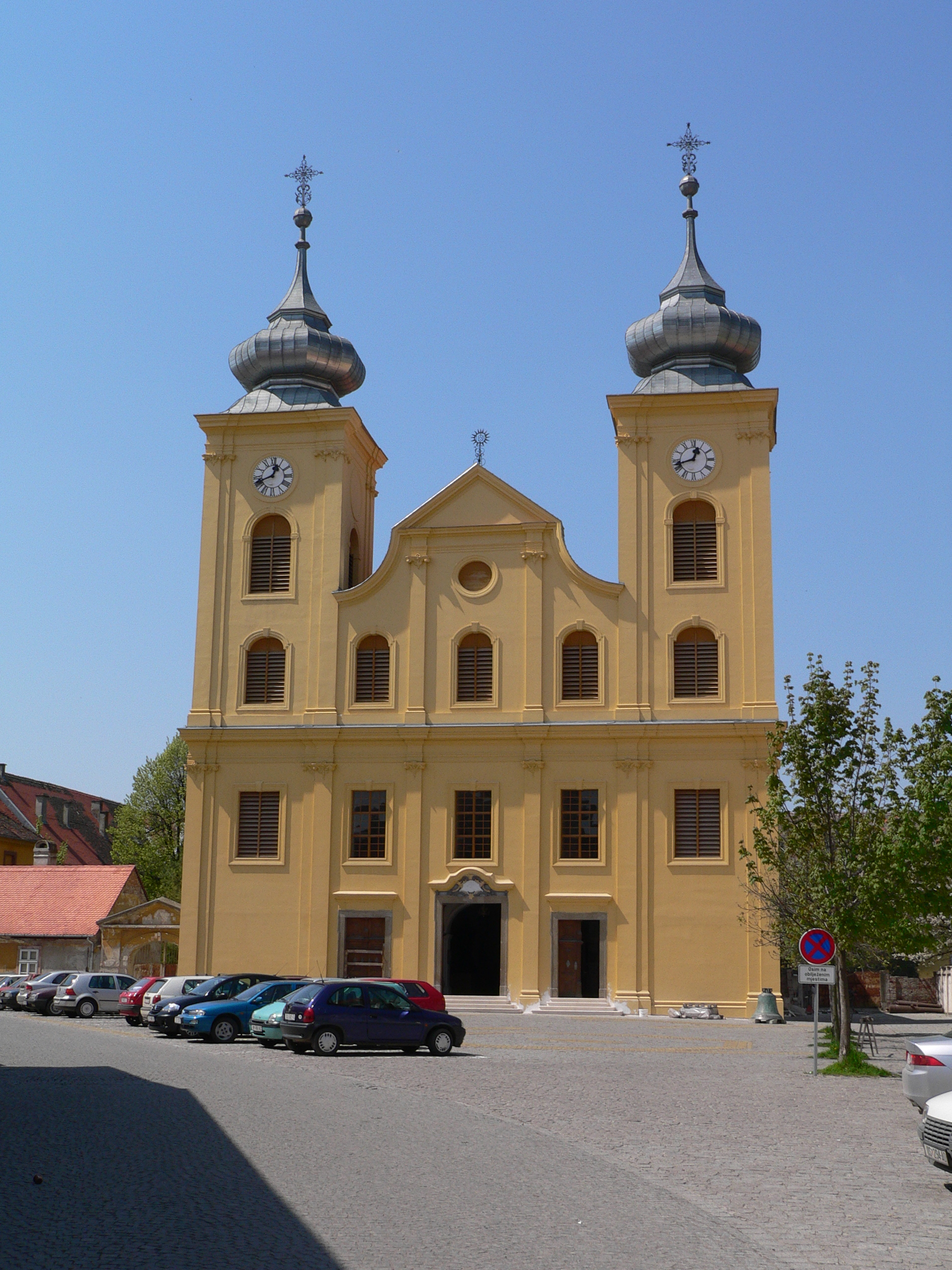|
Mursa (moth)
''Mursa'' is a genus of moths of the family Erebidae. Taxonomy The genus has previously been classified in the subfamily Phytometrinae within Erebidae or in the subfamily Herminiinae of the family Noctuidae. Species *'' Mursa fuscireticulata'' (Kaye, 1901) *'' Mursa gracilis'' (Möschler, 1890) *'' Mursa imitatrix'' (Warren, 1889) *''Mursa phtisialis ''Mursa phtisialis'', the mallow mursa moth, is a moth of the family Erebidae. The species was Species description, first described by Achille Guenée in 1854. It is found on Cuba, the southern parts of the United States, Jamaica, Central America ...'' (Guenée, 1854) *'' Mursa sotiusalis'' (Walker, 1859) *'' Mursa subrufa'' (Warren, 1889) References Boletobiinae Noctuoidea genera {{Boletobiinae-stub ... [...More Info...] [...Related Items...] OR: [Wikipedia] [Google] [Baidu] |
Moth
Moths are a paraphyletic group of insects that includes all members of the order Lepidoptera that are not butterflies, with moths making up the vast majority of the order. There are thought to be approximately 160,000 species of moth, many of which have yet to be described. Most species of moth are nocturnal, but there are also crepuscular and diurnal species. Differences between butterflies and moths While the butterflies form a monophyletic group, the moths, comprising the rest of the Lepidoptera, do not. Many attempts have been made to group the superfamilies of the Lepidoptera into natural groups, most of which fail because one of the two groups is not monophyletic: Microlepidoptera and Macrolepidoptera, Heterocera and Rhopalocera, Jugatae and Frenatae, Monotrysia and Ditrysia.Scoble, MJ 1995. The Lepidoptera: Form, function and diversity. Oxford, UK: Oxford University Press; 404 p. Although the rules for distinguishing moths from butterflies are not well establishe ... [...More Info...] [...Related Items...] OR: [Wikipedia] [Google] [Baidu] |
Erebidae
The Erebidae are a family of moths in the superfamily Noctuoidea. The family is among the largest families of moths by species count and contains a wide variety of well-known macromoth groups. The family includes the underwings ('' Catocala''); litter moths (Herminiinae); tiger, lichen, and wasp moths (Arctiinae); tussock moths (Lymantriinae), including the arctic woolly bear moth (''Gynaephora groenlandica''); piercing moths ( Calpinae and others); micronoctuoid moths (Micronoctuini); snout moths (Hypeninae); and zales, though many of these common names can also refer to moths outside the Erebidae (for example, crambid snout moths). Some of the erebid moths are called owlets. The sizes of the adults range from among the largest of all moths (> wingspan in the black witch) to the smallest of the macromoths ( wingspan in some of the Micronoctuini). The coloration of the adults spans the full range of dull, drab, and camouflaged (e.g., ''Zale lunifera'' and litter moths) to vi ... [...More Info...] [...Related Items...] OR: [Wikipedia] [Google] [Baidu] |
Phytometrinae
The Boletobiinae are a subfamily of moths in the family Erebidae, containing about 956 species. The taxon was described by Achille Guenée in 1858. Taxonomy Phylogenetic analysis has determined that several subfamilies of the family Erebidae that have been proposed in entomological literature since 2005, including Araeopteroninae, Aventiinae, Boletobiinae, Eublemminae, and Phytometrinae, together form a strongly supported clade as an aggregated subfamily Boletobiinae. The tribe-level groupings of genera within this expanded subfamily Boletobiinae are a topic of continued study. Genera *''Abacena'' *''Acremma'' *''Aglaonice'' *'' Allerastria'' *''Araeopteron'' *''Autoba'' *''Bandelia'' *''Calymma'' *''Cecharismena'' *''Cerynea'' *'' Condate'' *''Corgatha'' *''Enispa'' *''Enispodes'' *''Euaontia'' *''Eublemma'' *''Eublemmoides'' *''Glympis'' *''Hemeroplanis'' *''Hiccoda'' *''Homocerynea'' *''Homodes'' *''Honeyania'' *''Hormoschista'' *''Hypenagonia'' *'' Hypersophtha'' *'' Hype ... [...More Info...] [...Related Items...] OR: [Wikipedia] [Google] [Baidu] |
Herminiinae
The Herminiinae are a subfamily of moths in the family Erebidae. The members of the subfamily are called litter moths because the caterpillars of most members feed on dead leaves of plants, though others feed on living leaves, and/or the mushrooms of fungi as in the case of genus Idia (moth). Taxonomy The subfamily was previous treated as a separate family, Herminiidae, or as a subfamily of the family Noctuidae. Phylogenetic analysis has determined that the Herminiinae are most closely related to the subfamily Aganainae of the Erebidae. Genera *'' Aristaria'' *''Bleptina'' *''Carteris'' *''Chytolita'' *'' Drepanopalpia'' *''Herminia'' *'' Hydrillodes'' *''Hypenula'' *''Idia'' *''Lascoria'' *''Macristis'' *'' Macrochilo'' *''Nodaria'' *''Orectis'' *''Palthis'' *''Paracolax'' *''Phalaenophana'' *''Phalaenostola'' *''Phlyctaina'' *''Physula'' *''Polypogon'' *''Reabotis'' *''Redectis'' *'' Rejectaria'' *'' Renia'' *'' Simplicia'' *'' Tetanolita'' *'' Zanclognatha'' Example sp ... [...More Info...] [...Related Items...] OR: [Wikipedia] [Google] [Baidu] |
Noctuidae
The Noctuidae, commonly known as owlet moths, cutworms or armyworms, are a family of moths. They are considered the most controversial family in the superfamily Noctuoidea because many of the clades are constantly changing, along with the other families of the Noctuoidea. It was considered the largest family in Lepidoptera for a long time, but after regrouping Lymantriinae, Catocalinae and Calpinae within the family Erebidae, the latter holds this title now. Currently, Noctuidae is the second largest family in Noctuoidea, with about 1,089 genera and 11,772 species. This classification is still contingent, as more changes continue to appear between Noctuidae and Erebidae. Description Adult: Most noctuid adults have drab wings, but some subfamilies, such as Acronictinae and Agaristinae, are very colorful, especially those from tropical regions (e.g. '' Baorisa hieroglyphica''). They are characterized by a structure in the metathorax called the nodular sclerite or epaulette, whic ... [...More Info...] [...Related Items...] OR: [Wikipedia] [Google] [Baidu] |
Mursa Fuscireticulata
Osijek () is the fourth-largest city in Croatia, with a population of 96,848 in 2021. It is the largest city and the economic and cultural centre of the eastern Croatian region of Slavonia, as well as the administrative centre of Osijek-Baranja County. Osijek is located on the right bank of the Drava River, upstream of its confluence with the Danube, at an elevation of . Name The name was given to the city due to its position on elevated ground, which prevented the city being flooded by the local swamp waters. Its name "Osijek" derives from the Croatian language, Croatian word ''oseka'', which means "wikt:Ebb tide, ebb tide". Due to its history within the Habsburg monarchy and briefly in the Ottoman Empire, as well as the presence of German, Hungarian, and Serbian minorities throughout its history, Osijek has (or had) its names in other languages, Осек/Osek or Осијек/Osijek in serbian language, Serbian, Hungarian language, Hungarian: ''Eszék'', german: link=no, Esseg ... [...More Info...] [...Related Items...] OR: [Wikipedia] [Google] [Baidu] |
Mursa Gracilis
Osijek () is the fourth-largest city in Croatia, with a population of 96,848 in 2021. It is the largest city and the economic and cultural centre of the eastern Croatian region of Slavonia, as well as the administrative centre of Osijek-Baranja County. Osijek is located on the right bank of the Drava River, upstream of its confluence with the Danube, at an elevation of . Name The name was given to the city due to its position on elevated ground, which prevented the city being flooded by the local swamp waters. Its name "Osijek" derives from the Croatian word ''oseka'', which means " ebb tide". Due to its history within the Habsburg monarchy and briefly in the Ottoman Empire, as well as the presence of German, Hungarian, and Serbian minorities throughout its history, Osijek has (or had) its names in other languages, Осек/Osek or Осијек/Osijek in Serbian, Hungarian: ''Eszék'', german: link=no, Esseg or Essegg, tr, Ösek, la, Essek. It is also spelled ''Esgek''. ... [...More Info...] [...Related Items...] OR: [Wikipedia] [Google] [Baidu] |
Mursa Imitatrix
Osijek () is the fourth-largest city in Croatia, with a population of 96,848 in 2021. It is the largest city and the economic and cultural centre of the eastern Croatian region of Slavonia, as well as the administrative centre of Osijek-Baranja County. Osijek is located on the right bank of the Drava River, upstream of its confluence with the Danube, at an elevation of . Name The name was given to the city due to its position on elevated ground, which prevented the city being flooded by the local swamp waters. Its name "Osijek" derives from the Croatian word ''oseka'', which means " ebb tide". Due to its history within the Habsburg monarchy and briefly in the Ottoman Empire, as well as the presence of German, Hungarian, and Serbian minorities throughout its history, Osijek has (or had) its names in other languages, Осек/Osek or Осијек/Osijek in Serbian, Hungarian: ''Eszék'', german: link=no, Esseg or Essegg, tr, Ösek, la, Essek. It is also spelled ''Esgek''. ... [...More Info...] [...Related Items...] OR: [Wikipedia] [Google] [Baidu] |
Mursa Phtisialis
''Mursa phtisialis'', the mallow mursa moth, is a moth of the family Erebidae. The species was Species description, first described by Achille Guenée in 1854. It is found on Cuba, the southern parts of the United States, Jamaica, Central America, Central and South America. The larvae feed on ''Malva acuta''. References Moths described in 1854 Boletobiinae Moths of North America Moths of South America {{Boletobiinae-stub ... [...More Info...] [...Related Items...] OR: [Wikipedia] [Google] [Baidu] |
Mursa Sotiusalis
Osijek () is the fourth-largest city in Croatia, with a population of 96,848 in 2021. It is the largest city and the economic and cultural centre of the eastern Croatian region of Slavonia, as well as the administrative centre of Osijek-Baranja County. Osijek is located on the right bank of the Drava River, upstream of its confluence with the Danube, at an elevation of . Name The name was given to the city due to its position on elevated ground, which prevented the city being flooded by the local swamp waters. Its name "Osijek" derives from the Croatian word ''oseka'', which means " ebb tide". Due to its history within the Habsburg monarchy and briefly in the Ottoman Empire, as well as the presence of German, Hungarian, and Serbian minorities throughout its history, Osijek has (or had) its names in other languages, Осек/Osek or Осијек/Osijek in Serbian, Hungarian: ''Eszék'', german: link=no, Esseg or Essegg, tr, Ösek, la, Essek. It is also spelled ''Esgek''. ... [...More Info...] [...Related Items...] OR: [Wikipedia] [Google] [Baidu] |
Mursa Subrufa
Osijek () is the fourth-largest city in Croatia, with a population of 96,848 in 2021. It is the largest city and the economic and cultural centre of the eastern Croatian region of Slavonia, as well as the administrative centre of Osijek-Baranja County. Osijek is located on the right bank of the Drava River, upstream of its confluence with the Danube, at an elevation of . Name The name was given to the city due to its position on elevated ground, which prevented the city being flooded by the local swamp waters. Its name "Osijek" derives from the Croatian word ''oseka'', which means " ebb tide". Due to its history within the Habsburg monarchy and briefly in the Ottoman Empire, as well as the presence of German, Hungarian, and Serbian minorities throughout its history, Osijek has (or had) its names in other languages, Осек/Osek or Осијек/Osijek in Serbian, Hungarian: ''Eszék'', german: link=no, Esseg or Essegg, tr, Ösek, la, Essek. It is also spelled ''Esgek''. ... [...More Info...] [...Related Items...] OR: [Wikipedia] [Google] [Baidu] |
Boletobiinae
The Boletobiinae are a subfamily of moths in the family Erebidae, containing about 956 species. The taxon was described by Achille Guenée in 1858. Taxonomy Phylogenetic analysis has determined that several subfamilies of the family Erebidae that have been proposed in entomological literature since 2005, including Araeopteroninae, Aventiinae, Boletobiinae, Eublemminae, and Phytometrinae, together form a strongly supported clade as an aggregated subfamily Boletobiinae. The tribe-level groupings of genera within this expanded subfamily Boletobiinae are a topic of continued study. Genera *''Abacena'' *''Acremma'' *''Aglaonice'' *'' Allerastria'' *''Araeopteron'' *''Autoba'' *''Bandelia'' *''Calymma'' *'' Cecharismena'' *''Cerynea'' *'' Condate'' *''Corgatha'' *'' Enispa'' *''Enispodes'' *''Euaontia'' *'' Eublemma'' *''Eublemmoides'' *''Glympis'' *''Hemeroplanis'' *''Hiccoda'' *''Homocerynea'' *''Homodes'' *''Honeyania'' *''Hormoschista'' *''Hypenagonia'' *'' Hypersophtha'' *'' ... [...More Info...] [...Related Items...] OR: [Wikipedia] [Google] [Baidu] |

.jpg)


.jpg)

